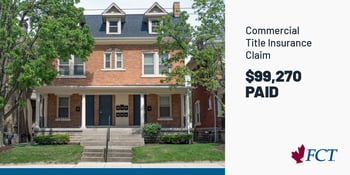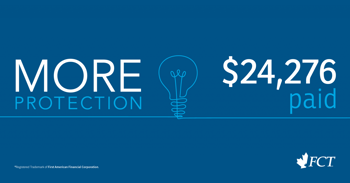
Picture this scenario: you recently purchased a house that needs some renovating. While demolishing walls, you discover a high level of mould in the guest bathroom. That’s an expensive issue to fix, but you recall that you got title insurance as part of closing on the home. Are you covered?
Understanding exactly how your title insurance policy protects you is key to enjoying the peace of mind it provides. Let’s break down some common misconceptions about how title insurance coverage works:
Does title insurance cover unpermitted work?
It can. But the key here is that title insurance doesn’t cover the affected structure itself. Instead, it covers losses from a municipal authority requiring the removal or repair of property elements that a previous owner had built or modified without a permit. It may also provide compensation for loss of property value from the compliance work.
This sometimes causes confusion since new owners often learn of the unpermitted work when it leads to some damage to their property. The problem is that their title insurance isn’t to protect against the property damage, but rather the expense of complying with an order to fix the previous owner’s work.
What’s not covered by title insurance?
Home insurance is often confused with title insurance. They both deal with protecting a property, but in very different ways:
Home insurance is meant to cover loss and damage to the physical structures and improvements on a property. It can’t provide any protection against fraud, survey issues, unpermitted work, encroachment issues, zoning issues or any of the other dozens of covered risks under title insurance.
Likewise, title insurance doesn’t cover things like flood damage, the theft of items from your property or medical and accident liability. Your title insurance policy is meant to protect your clear title to your home. It can cover you against losses from risks that no other type of insurance can, for as long as you have an interest in the property.
We often get title insurance claim requests that are more suited to home insurance—the scenario above was based on a real claim we received, but weren’t able to cover because it was really a home insurance claim. That’s why it’s so important to have both a home insurance and a residential title insurance policy in place as soon as possible when you purchase a home.
Did you know there are two types of title insurance?
Sometimes, homeowners suffer financial losses from a covered risk, but don’t actually have the title insurance they think they do. There are two types of title insurance policies: lender (or loan) policies, and homeowner (or owner) policies. Understanding the differences between the two is important to making sure you’re properly protected.
Many lenders require that homebuyers purchase a loan policy as an automatic part of securing a mortgage. Loan policies provide coverage for the lender on a mortgage. They help protect against risks lenders face, like tax liens. Loan policies also help the closing process go more smoothly, which helps both lenders and borrowers.
Homeowner policies are what people usually mean when they say “title insurance.” For a one-time premium an owner policy provides coverage from the risks you may face, like the unpermitted work coverage mentioned above, encroachment issues, encumbrances, fraud and more.
Loan policies are often mandatory when buying a home, but owner policies are optional. A homeowner may think they’re properly covered because they see title insurance in their closing documents when it’s just the loan policy.
Your home is one of the greatest investments you’ll ever make, but for you to be able to enjoy it, it needs to be properly protected. Don’t leave your ownership at risk: get covered with residential title insurance from FCT.
Insurance by FCT Insurance Company Ltd. Services by First Canadian Title Company Limited. The services company does not provide insurance products. This material is intended to provide general information only. For specific coverage and exclusions, refer to the applicable policy. Copies are available upon request. Some products/services may vary by province. Prices and products/services offered are subject to change without notice.
®Registered Trademark of First American Financial Corporation.






























































































